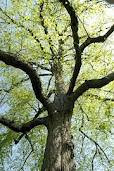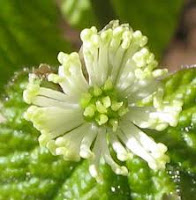Alfalfa is perhaps best known for the sprouted seeds which can be added to salads and soups, but this member of the Fabaceae or Leguminosae family (pea and bean family) has much to recommend it as long as you don’t suffer from gout or hormone-related cancer and are not pregnant or breast-feeding. It is also called Lucerne Lucerne Europe including into the British Isles where it is more or less naturalized.
 In 2010 alfalfa sprouts were thought to be the cause of a salmonella outbreak in the USA when six people were hospitalized after consuming contaminated sprouts, so you have to clean them thoroughly before using, or sprout your own from alfalfa seeds.
In 2010 alfalfa sprouts were thought to be the cause of a salmonella outbreak in the USA when six people were hospitalized after consuming contaminated sprouts, so you have to clean them thoroughly before using, or sprout your own from alfalfa seeds. The leaves are primarily used in medicine and can be used fresh or dried. They can be made into a tisane, but it isn’t very pleasant to drink as people who have drunk this say that it tastes a lot like old socks.
A poultice can be made from the seeds, which need to be heated, and applied to the ear to stop earache, but personally I think eardrops would be better or warm olive oil. The leaves have antioxidant properties and contain vitamin A, some of the B-complex ones such as B1 (thiamin), B2 (riboflavin), and B3 (niacin), vitamins C and K. The minerals calcium, iron and phosphorous are also present, with some manganese, sodium and chlorine, along with potent bioflavonoids which contribute to their antioxidant properties. They have a mild pain relieving action and have antibacterial properties, so it is ironic that they caused an outbreak of salmonella. The expressed juice from the leaves has been used to produce vomiting and the tisane is a mild laxative, and diuretic. The root has been used to reduce fevers and is also credited with helping urinary problems which cause highly coloured urine to be produced. The plant is prescribed when people were suffering from weakness while recovering from an illness, and for anaemia, and internal haemorrhages. The plant’s extracts have proved to have neuroprotective properties in vitro in experiments, but it is too early to say that this would apply in humans.
 While it is true that alfalfa has been used in traditional medicine systems around the world for centuries, it is sadly the case that there have been few trials carried out on this plant by people who do not have a vested interest in the sale of this plants seeds, sprouts or extracts. Certainly it is a good source of protein and has been viewed as such by many ancient people - but as animal feed not for humans primarily. However the plant is being genetically engineered so that the saponins-like substances are removed from it, so ultimately making it a better source of protein and vitamins for people. As it is if you cook the leaves and change the water once, then you should not suffer any ill-effects. It has been said that alfalfa is the world’s most foraged for plant, for human consumption, so if it were altered so that it were safer to eat this would be beneficial.
While it is true that alfalfa has been used in traditional medicine systems around the world for centuries, it is sadly the case that there have been few trials carried out on this plant by people who do not have a vested interest in the sale of this plants seeds, sprouts or extracts. Certainly it is a good source of protein and has been viewed as such by many ancient people - but as animal feed not for humans primarily. However the plant is being genetically engineered so that the saponins-like substances are removed from it, so ultimately making it a better source of protein and vitamins for people. As it is if you cook the leaves and change the water once, then you should not suffer any ill-effects. It has been said that alfalfa is the world’s most foraged for plant, for human consumption, so if it were altered so that it were safer to eat this would be beneficial. In the past and it is claimed in the present, the plant has been used to help disperse calculus which gathers around the joints causing inflammation, and the bioflavonoids in the leaves seem to have anti-bacterial properties which can help the digestive system. The oestrogenic properties of the plant mean that it may be helpful in women suffering the symptoms of the menopause and painful or irregular menstruation. The high magnesium and calcium levels present in it are believed to help to relieve migraines, and the tisane has natural laxative and diuretic properties. It is also claimed that it can lower ‘bad’ cholesterol levels in the blood and promote good cholesterol. It is also said to be effective in the removal or dispersal of kidney stones.
In the past and it is claimed in the present, the plant has been used to help disperse calculus which gathers around the joints causing inflammation, and the bioflavonoids in the leaves seem to have anti-bacterial properties which can help the digestive system. The oestrogenic properties of the plant mean that it may be helpful in women suffering the symptoms of the menopause and painful or irregular menstruation. The high magnesium and calcium levels present in it are believed to help to relieve migraines, and the tisane has natural laxative and diuretic properties. It is also claimed that it can lower ‘bad’ cholesterol levels in the blood and promote good cholesterol. It is also said to be effective in the removal or dispersal of kidney stones. The plant began to be cultivated in
The plant began to be cultivated in Probably the best use for alfalfa for humans is to put sprouts in salads and sandwiches as well as in soup.
`


















